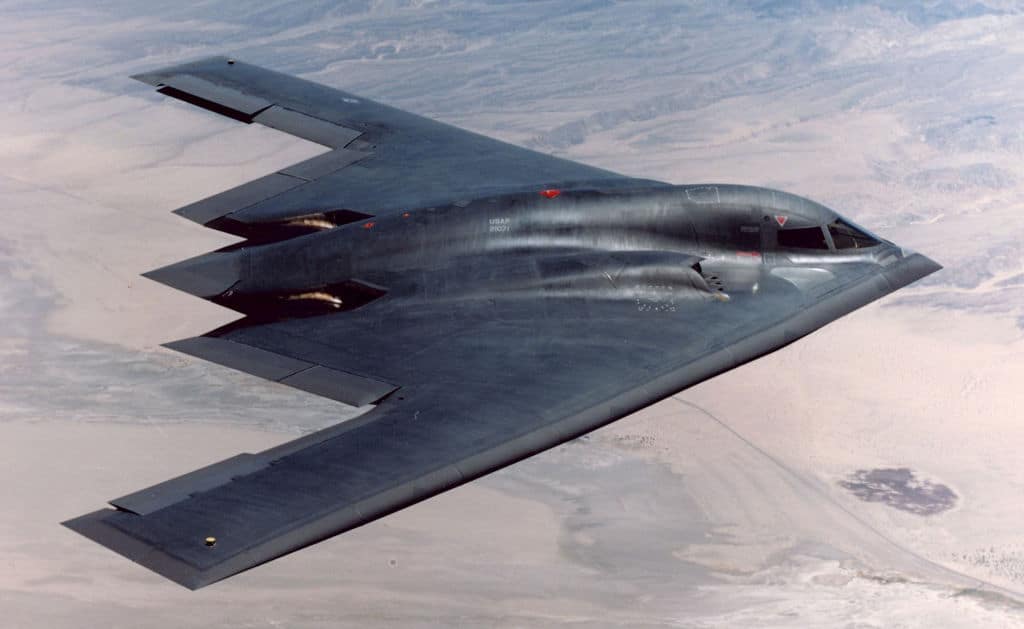Archbishop Ettore Balestrero has warned of the “existential threat” posed by nuclear weapons twinned with an increase in rhetoric and threats about their use occurring around the world presently.
Speaking at the United Nation's Geneva headquarters, the Holy See’s Permanent Observer to the UN said the “existential threat” posed by nuclear weapons has been exacerbated by the current “tense strategic environment” and the “ongoing modernisation and expansion of nuclear arsenals", <a href="https://www.vaticannews.va/en/vatican-city/news/2024-07/holy-see-ettore-balestrero-nuclear-spending-rhetoric-concern.html"><mark style="background-color:rgba(0, 0, 0, 0)" class="has-inline-color has-vivid-cyan-blue-color">reports</mark></a> <em>Vatican News</em>.<br><br>Throughout the ongoing war in Ukraine, Russian President Vladimir Putin has warned of the risk of nuclear weapons being used if Russia faced a serious enough threat. The ongoing conflict in the Middle East between Israel and Hamas has also cast a spotlight on the risk of nuclear weapons being deployed in that region. <br><br>Israel has never confirmed if it possesses a nuclear arsenal, maintaining a policy of strategic ambiguity, though some experts believe it does posses a small arsenal. Its bitter enemy Iran does not posses nuclear weapons, but is feared to be trying to develop them in nuclear facilities. <br><br>Meanwhile, according to calculations from the International Campaign to Abolish Nuclear Weapons (Ican) pressure group, global spending on nuclear weapons is estimated to have increased by 13 per cent to a record $91.4 billion during 2023, <a href="https://www.theguardian.com/world/article/2024/jun/17/global-spending-on-nuclear-weapons-up-13-in-record-rise"><mark style="background-color:rgba(0, 0, 0, 0)" class="has-inline-color has-vivid-cyan-blue-color">reports</mark></a> the <em>Guardian</em>. This has been partly driven by a sharp increase in US defence budgets.<br><br>In his address to a UN committee on the non-proliferation of nuclear weapons, the archbishop highlighted that a distinctive feature of Vatican diplomacy on nuclear issues is that – contrary to the doctrine of MAD (Mutually Assured Destruction), whereby if two opponents both have nuclear weapons they will never be able to use them as each would then wipe the other out – even the possession of nuclear weapons, even for deterrence, is morally wrong.
The archbishop added that Pope Francis <a href="https://www.vatican.va/content/francesco/en/speeches/2019/november/documents/papa-francesco_20191124_messaggio-arminucleari-nagasaki.html"><mark style="background-color:rgba(0, 0, 0, 0)" class="has-inline-color has-vivid-cyan-blue-color">reaffirmed the immorality</mark></a> of both manufacturing and possessing nuclear weapons during his visit to Nagasaki in 2019. He then went on to say that the Holy See is concerned both by the “continuing growth in military expenditure related to nuclear weapons” and the “increase in rhetoric and threats about their possible use”. Such actions, he said, are “an affront to humanity as a whole". <br><br>All nine of the world’s nuclear armed nations are spending more, the <em>Guardian's</em> article on the Ican report highlights, with the US remaining the biggest spender on nuclear weapons (estimated at $51.5 billion). China is judged to be the second largest spender with a budget of $11.9 billion. Russia is the third largest spender, at $8.3 billion, followed by the UK ($8.1 billion) and France ($6.1 billion).<br><br>The US Air Force’s strategic bomber fleet and nuclear capability continues to consist of the B-52H Stratofortress, which has been in service since the 1950s, and the B-2 Spirit, which entered service in the late 1990s, <a href="https://www.af.mil/About-Us/Fact-Sheets/Display/Article/104482/b-2-spirit/"><mark style="background-color:rgba(0, 0, 0, 0)" class="has-inline-color has-vivid-cyan-blue-color">about which</mark></a> the US Air Force (USAF) says:<br><br>"A dramatic leap forward in technology, the bomber represents a major milestone in the US bomber modernisation program. The B-2 brings massive firepower to bear, in a short time, anywhere on the globe through previously impenetrable defences."<br><br>The USAF is currently upgrading and modernising its existing bomber fleet and is believed to be developing a future, next-generation bomber, which is expected to be a stealthy, long-range bomber similarly capable to the B-2 of carrying both nuclear and conventional payloads.
Archbishop Balestrero presented three proposals from the Holy See to address the current increase in rhetoric and spending around nuclear weapons and their use.
Firstly, he said, it is important to recognise that non-proliferation and disarmament, in addition to being legal obligations, are “ethical responsibilities towards all members of the human family”.
Quoting Pope Francis during his Nagasaki visit, the archbishop stated: “Peace and international stability are incompatible with attempts to build upon the fear of mutual destruction or the threat of total annihilation. They can be achieved only on the basis of a global ethic of solidarity and cooperation."<br><br>The second proposal is the need for "sincere dialogue" aimed at reducing nuclear weapons stockpiles worldwide.<br><br>Thirdly, the archbishop highlighted that the money spent on nuclear weapons could be better spent on humanitarian projects. As a result, he reiterated the Holy See's long-time proposal of establishing a global poverty fund, financed with “portions of the money otherwise spent on weapons and other military expenditures”.<br><br>Closing his address, Archbishop Balestrero reaffirmed the Holy See’s “firm conviction” that a world free of nuclear weapons is "both possible and necessary". <br><br><em>Photo: In this handout photo provided by the US Air Force, a B-2 bomber flies over Edwards Air Force Base in California, USA, 14 August 2003. The B-2 Spirit is a multi-role bomber capable of delivering both conventional and nuclear munitions. (Photo by U.S. Air Force/Getty Images.)</em>



